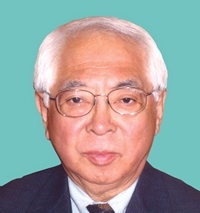By Bob Allen
President Franklin Roosevelt’s description of the Dec. 7, 1941, Japanese attack as “a date which will live in infamy” went down in history, but Yosh Nakagawa remembers another day – Feb. 19, 1942.
That’s when FDR, in an atmosphere of World War II hysteria and encouraged by officials at all levels of the federal government, signed Executive Order 9066, authorizing the relocation of 120,000 persons of Japanese descent to hastily built internment camps for the duration of the war.
 Nakagawa, a former vice president of American Baptist Churches USA and longtime member of Japanese Baptist Church in Seattle, describes his experience in a new video by American Baptist Home Mission Societies, “A Church Stands With Its People.”
Nakagawa, a former vice president of American Baptist Churches USA and longtime member of Japanese Baptist Church in Seattle, describes his experience in a new video by American Baptist Home Mission Societies, “A Church Stands With Its People.”
Released Dec. 7 and posted on the society’s website, the 13-minute video recounts the forgotten side of America’s response to Pearl Harbor and the courage of American Baptist missionaries who stood by oppressed immigrants and their families against the tide of public opinion.
“These people came and lived as we lived and sacrificed who they were to be with the people,” Nakagawa says in the video. “They did not say, ‘I cannot help you because you are Catholic or you’re Buddhist.’ They helped the total community they came to serve.”
Nakagawa was baptized at Minidoka War Relocation Center near Sioux Falls, Idaho, one of 10 compounds operated from 1942 to 1945 to confine Japanese-American citizens and resident aliens evacuated from a 50-60 mile-wide coastal area stretching from Washington state to California and extending inland into southern Arizona.
Some of the 9,000 residents at Minidoka were members of the Japanese Baptist Church, organized in 1899, eight years after three Japanese-American teenagers came forward and made their decision for Christ during a revival at Seattle’s First Baptist Church.
Church members in the video describe one day being on good terms with Anglo friends and neighbors and the next being viewed with suspicion as potential spies.
 The evacuees were permitted to bring only what they could carry. Emery Andrews, pastor of Japanese Baptist Church from 1929 to 1955, made the 1,500-mile roundtrip between Seattle and Twin Falls a total of 56 times to return personal property retrieved and collected in the church gymnasium.
The evacuees were permitted to bring only what they could carry. Emery Andrews, pastor of Japanese Baptist Church from 1929 to 1955, made the 1,500-mile roundtrip between Seattle and Twin Falls a total of 56 times to return personal property retrieved and collected in the church gymnasium.
Known as “Andy” by friends, Andrews was twice thrown out of an Idaho Falls restaurant for being a “Jap lover” and subjected to numerous threats and taunting for his association with the Japanese.
Andrews resigned as pastor in 1955 to allow the congregation to call a second-generation Japanese-American as pastor. He rejoined the staff in 1971 as minister of visitation, and died in 1976 at the age of 81. More than 1,000 people attended his funeral at Seattle’s First Baptist Church.
Released on Pearl Harbor Day, “A Church Stands With Its People” commemorates the 70th anniversary of Executive Order 9066.
“Japanese immigrants and their families were subjected to harsh living conditions in the camps, where they were relocated because of wartime hysteria that they would serve as spies for the country of their heritage,” says a news release. “During this bleak period in U.S. history, American Baptist home missionaries swam against the tide of popular opinion, affirming the immigrants and their families as their brothers and sisters, and serving among them as the hands and feet of Christ.”
